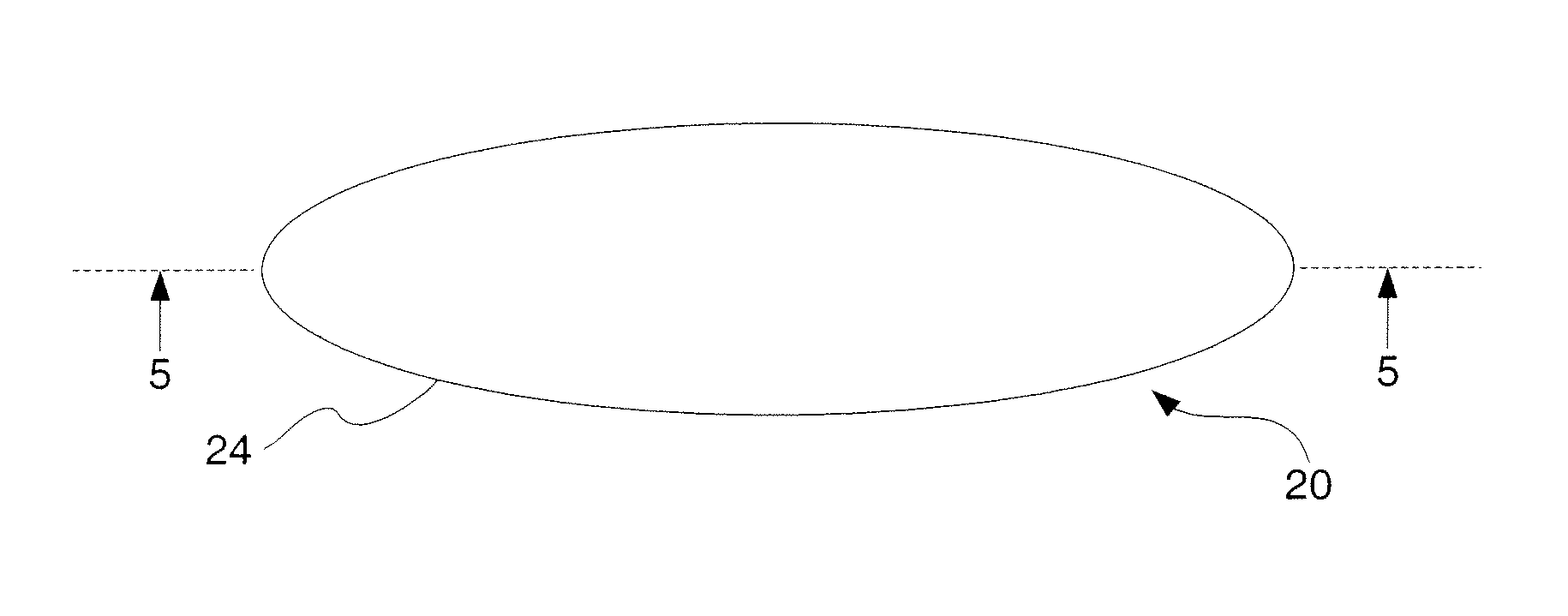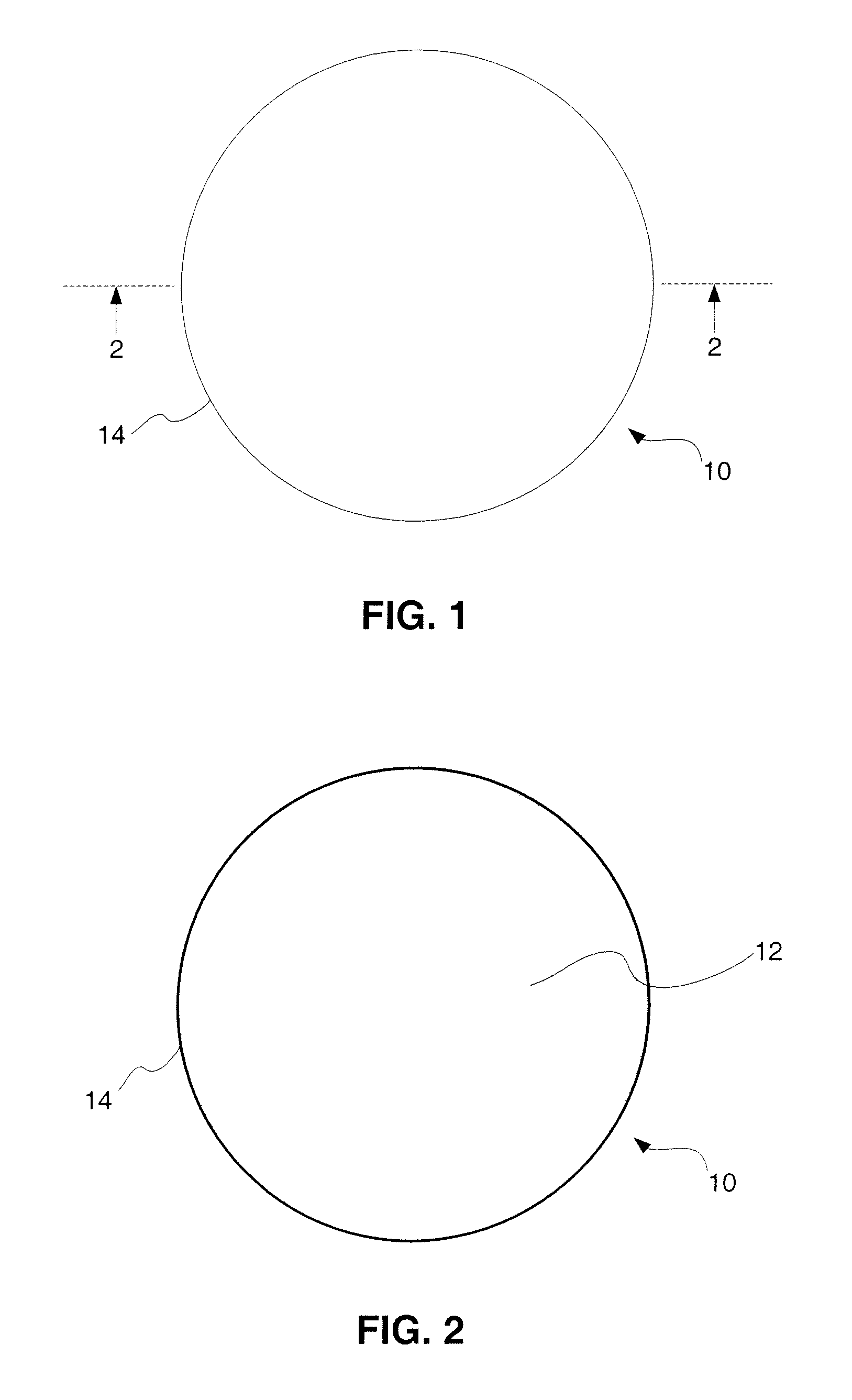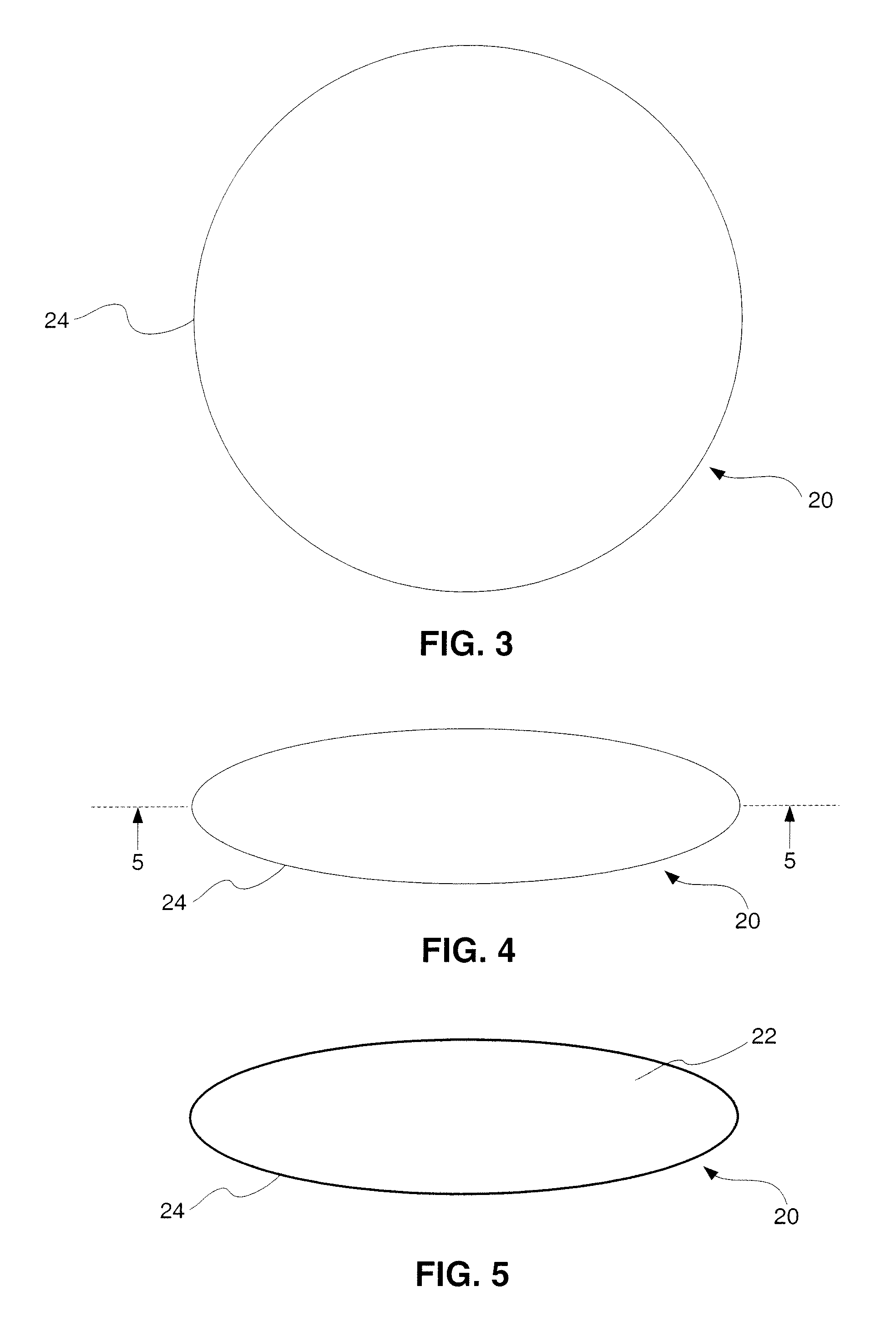Hydrogen permeable encapsulated solid-state hydride materials and method for forming and using same
a technology of hydride powder and encapsulation, which is applied in the direction of liquid materials, transportation and packaging, packaging goods types, etc., can solve the problems of hazardous reaction, inability to control the large bulk of powder that generates hydrogen in an exothermic and therefore self-sustaining process, and inability to flow the hydride powder through the reaction zone in a controlled fashion. , to achieve the effect of convenient transportation and loading, relatively easy handling, and convenient handling
- Summary
- Abstract
- Description
- Claims
- Application Information
AI Technical Summary
Benefits of technology
Problems solved by technology
Method used
Image
Examples
Embodiment Construction
[0019]As shown in FIGS. 1 and 2, one possible shape of the capsules 10 is generally spherical. A spherical shape or even polyhedral shape will minimize the weight of the capsule relative to the weight of hydride material enclosed, and it is also likely to optimize the flow characteristics. However, other shapes are possible, such as ovoid or flattened shapes. Notably, a flattened capsule, oblate spheroid (e.g., generally M&M® shaped) such as shown in FIGS. 3-5, will reduce diffusion distances within the capsule. In FIG. 3, a top plan view of an exemplary generally oblate spheroid capsule form factor 20 is shown and has a hydrogen gas permeable shell 24. FIG. 4 is a side view of the exemplary generally oblate spheroid-shaped capsule 20 of FIG. 3, and FIG. 5 is a cross-sectional view of the generally spherical capsule of FIG. 4 along view lines 5-5 and shows the contained solid-state hydride material 22 contained in the shell 24.
[0020]The size of the capsules can range (in diameter) f...
PUM
| Property | Measurement | Unit |
|---|---|---|
| Diameter | aaaaa | aaaaa |
| Diameter | aaaaa | aaaaa |
| Shape | aaaaa | aaaaa |
Abstract
Description
Claims
Application Information
 Login to View More
Login to View More - Generate Ideas
- Intellectual Property
- Life Sciences
- Materials
- Tech Scout
- Unparalleled Data Quality
- Higher Quality Content
- 60% Fewer Hallucinations
Browse by: Latest US Patents, China's latest patents, Technical Efficacy Thesaurus, Application Domain, Technology Topic, Popular Technical Reports.
© 2025 PatSnap. All rights reserved.Legal|Privacy policy|Modern Slavery Act Transparency Statement|Sitemap|About US| Contact US: help@patsnap.com



